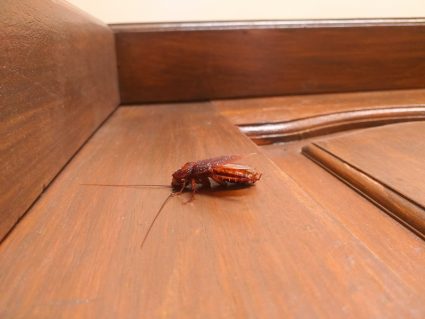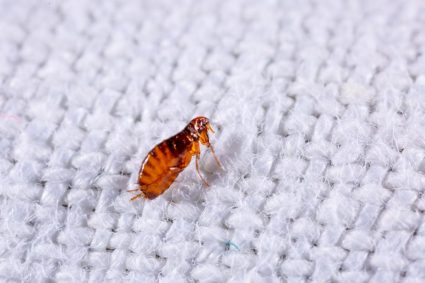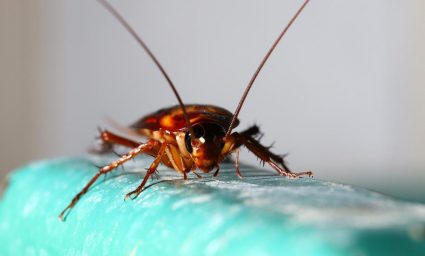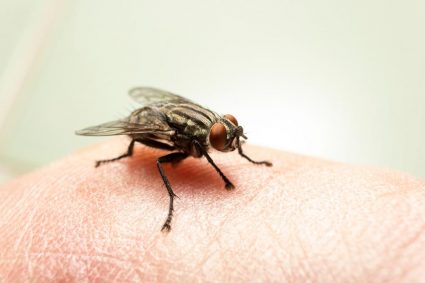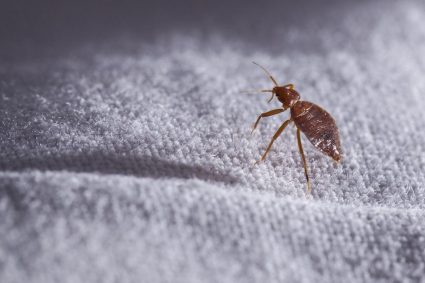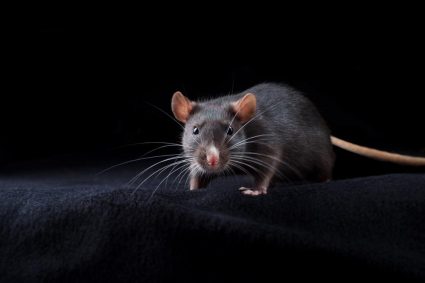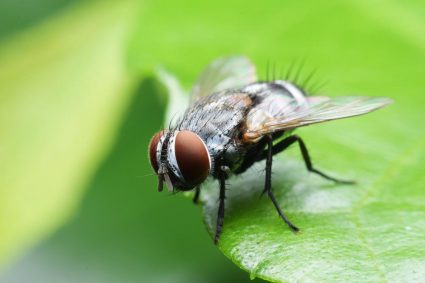
Crickets aren’t harmful, but they can still be annoying and repulsive. These pests chirp loudly to attract mates.
To get rid of these annoying creatures from your house, the first step is to know how they got inside the house.
- Crickets are drawn to light, so leaving your porch lights on at night may invite them inside.
- They frequently enter houses in search of warmth or food.
- Most pests, including crickets, enter homes through openings in doors, windows, or the home’s exterior.
- Remove any clutter from the house; crickets like to hide in the clutter. Therefore, it would be best if you also sealed up any openings in your house.
Read on to learn more about how crickets enter your house and what you can do to get rid of them.
What Type of Crickets Can Enter Your House?
The most commonly found crickets in a house include:
1. House Cricket
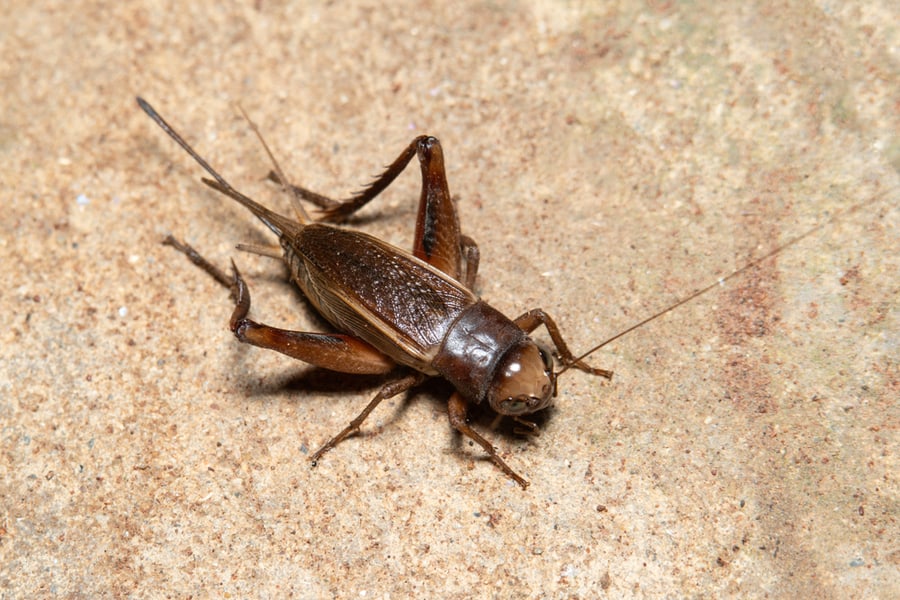
The name “house cricket” refers to how frequently it enters homes where they are known to live forever. The adults, pale yellow-brown with three dark crossbands on the head, reach a height of about 7/8″.
House crickets usually favor garbage dumps and live outside during summer. They usually enter the house in search of moisture.
When a house cricket enters your home, they often spend the day hiding in dim, cozy places.
House crickets enjoy chewing on fabrics, especially silk, wool, cotton, and synthetic materials. They are particularly attracted to sweat-stained clothes, which is gross.
You rarely encounter them during the day because they are nocturnal insects.
2. Field Crickets
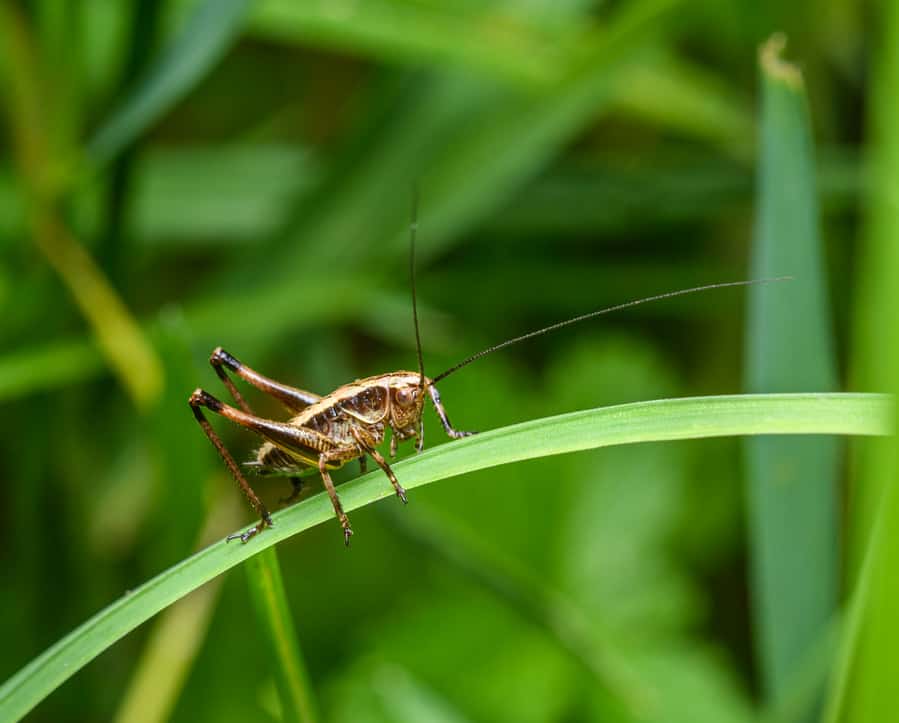
Field crickets usually start to grow quickly around August. Their name derives from the fact that these crickets are known to harm crops seriously.
They normally die by winter since they cannot survive for long periods indoors.
However, once indoors, just like the house crickets. They enjoy feeding on clothes, especially soiled with sweat or food.
3. Camel Cricket
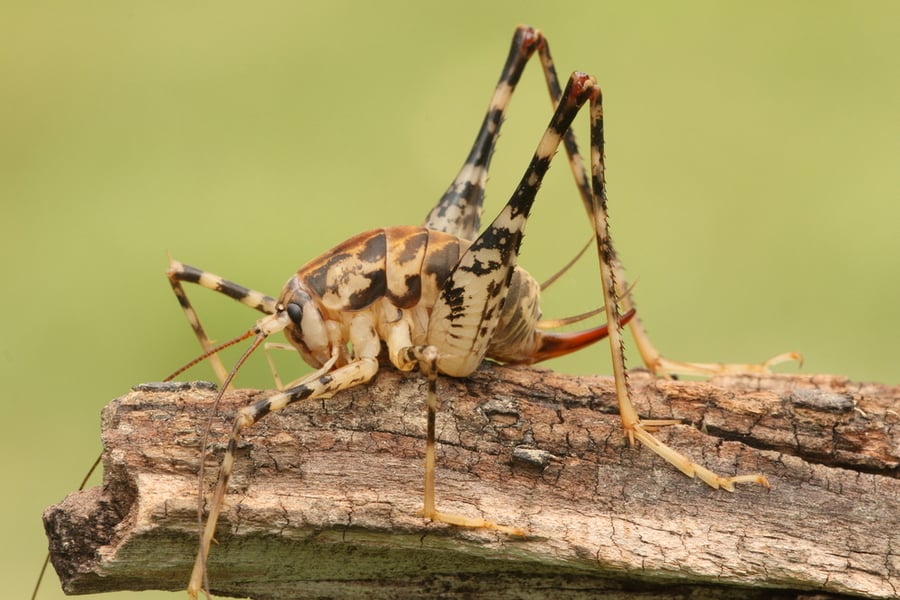
In my opinion, these are the spookiest-looking crickets that will haunt the sleep of anyone unlucky enough to encounter them.
It’s quite evident where the name “camel crickets” comes from. These crickets are frequently discovered under stones and in the vicinity of caves and rough terrain.
In addition, you can find camel crickets in cool, moist places like under rocks, mulch, railroad ties, garbage, and woodpiles.
Camel crickets also like to hide in pipes, under air conditioners, and in sheds.
Why Do I Have Crickets in My House?
Due to their small size, crickets can enter your home through very small gaps. In addition, your outdoor lighting could contribute to the crickets trying to enter your home because they are drawn to intense outdoor lighting.
Consider using yellow light outdoors to reduce the chances of crickets entering.
Door sweeps can also help deter crickets from entering the home. These are usually simple to install and can also keep various other insects out.
You can also catch crickets using sticky traps placed around the garage. Make sure that you don’t place traps where they can harm your children or pets.
Getting Rid of Crickets From Your House
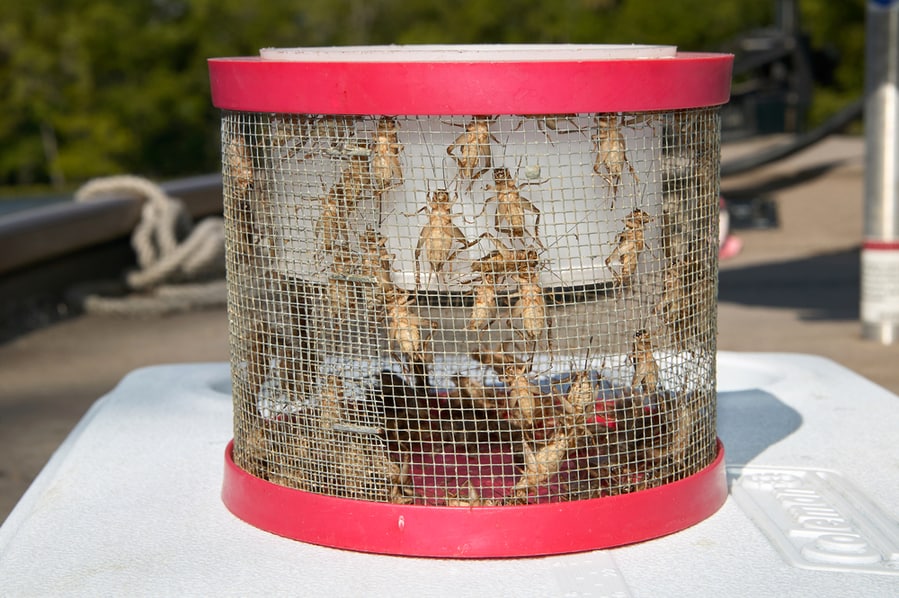
A few crickets in your home won’t cause any harm, but large populations might be problematic because they like to nibble on any cloth or paper lying around.
- Start by putting sticky boards in the parts of the room where you hear the most chirping sounds if you want to get rid of crickets in your house. You can use cornmeal as bait by placing it in the middle of the board.
- If you see any crickets outright, skip the sticky boards and use a vacuum hose to catch them before dumping the canister outside.
- If you notice a significant cricket infestation in your house, you can use cricket-eradication sprays and baits. Make sure only to buy chemicals that are labeled for the crickets.
Read and follow the instructions written on the spray to eliminate the crickets effectively. Then, spray the pesticide in the general area of your home’s entryways, along baseboards, and in the basement and garage. - Crickets can only survive in certain conditions and enter the house if there is an opening for them to do so. Therefore, seal or cover all possible access points, such as foundation cracks, spaces around doors, and low windows, to stop further infestations.
- Never put firewood or other organic material next to the home since this might encourage crickets and other pests to use the wood as a refuge before making their way inside. Instead, keep the base of your property clear of tall grass, weeds, and mulch.
In addition to sealing the outside of your home, you can take extra security measures like:
- Turning off outside lights at night or changing your light bulbs for special insect-repellent ones.
- Hiring a pest control business to install baits or spray the exterior of your house with an insecticidal barrier.
- Clearing your yard of clutter.
- Trimming bushes, shrubs, and other plants.
- Regularly cleaning your house and avoiding crumbs.
Conclusion
Crickets are small insects that can enter your house through cracks or spaces in the entryways.
Unfortunately, there is no definite measure to prevent them from entering your house, but you can take some preventive measures like using yellow lights, keeping your house clean, and trimming the grass in your backyard.
Frequently Asked Questions
Where Do Crickets Hide in the House?
You can find crickets under furniture and appliances because they favor wet, cool environments. However, they are infamous for lurking under the toe kick of kitchen and bathroom cabinets.
It’s quite challenging to get them out once you’ve got a few in there.
You must determine the type of cricket in your house before beginning a treatment to eliminate them. Even while crickets are not dangerous to humans, you should still have a professional pest control company manage them.
What Are the Signs of Cricket Infestations?
The most obvious sign of the pesky insects in your house is seeing them flying around your home. Other common signs are the sound of chirping, unknown droppings on your furniture, and damage to your clothes.
What Do Crickets Eat?
Crickets are omnivores insects, so they’ll eat almost anything. They usually eat plants and small insects in the wild. However, they might also consume your home’s walls, carpets, or clothing.
If the infestation is not controlled, it could seriously harm your house.

